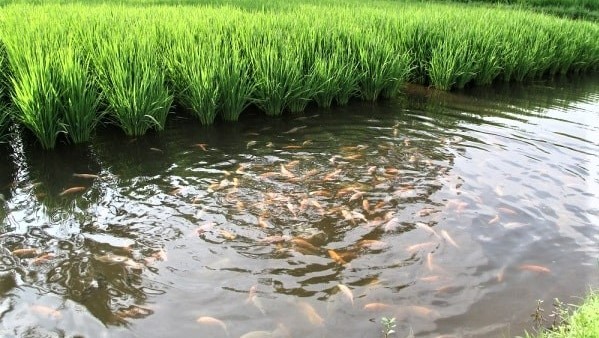
A farm that caters both: Farming of rice and fish in tandem
As India is known as a peninsula so the cultivation of rice and fish both go hand in hand. Rice and fish are staple foods not only in India's coastal regions, but also around the world.
Rice and fish farming is a duo culture farming method in which rice is the primary commodity and fishes are introduced for additional revenue. Rice (paddy) needs approximately 450-700 mm of water per total growing period, according to research. As a result, aquatic animals such as fish, mostly fresh water can be introduced into paddy fields to increase the overall rice cultivation system.
Agriculture is considered to be the backbone of the Indian economy, while fisheries ranked second after agriculture. Agriculture provides a living for approximately 60-70 percent of India's population. West Bengal, Punjab, Haryana, Andhra Pradesh, Tamil Nadu, and Kerala are the major rice producing states in India, with an estimated rice production record of 102.36 million tonnes in the 2020-2021 crop year. Therefore, the addition of fish will generate additional income. The introduction of fish into paddy fields creates a cooperative arrangement in which the rice crop not only feeds the fish but also provides shelter and the fish manure serves as an organic fertilizer for the rice crops.
This duo culture cultivation system not only increases the soil fertility but also helps in preventing soil degradation. The fish's constant movement in the paddy field will not only aid in the proper circulation of diluted oxygen but will also help in avoiding stagnant water, thereby eliminating insects, pests and weeds. This also aids in the mineralization of organic matter. As identified, rice yields were 10-26 percentage higher, material inputs were 7 percentage lower and a steady increase in employment generation.
This method of integrated rice-fish farming system, establishes a social link between the aquaculture and agricultural industries, which was impossible in monoculture.
In India, there are 43.86 million hectares (ha) of land available for rice cultivation, with an estimated 20 million (ha) suitable for the rice-fish integration scheme, primarily in rain-fed medium lands, waterlogged lands, and other areas. However, only 0.23 million hectares of rice-fish farming are currently in use.
“CR Dhan 501” is currently the most recent deep water rice variety for Assam and Uttar Pradesh that can be used in an integrated rice and fish farming system.
Therefore, adopting this duo culture method will not only help to boost both the agriculture and aquaculture sectors, but it will also help to improve the farmers' economic status by growing multiple income sources. Further innovations can improve the profit ratio as well as the environment's long-term viability.
Rural Business Finance (Micro Loans), L&T Financial Services
3yVery informative!